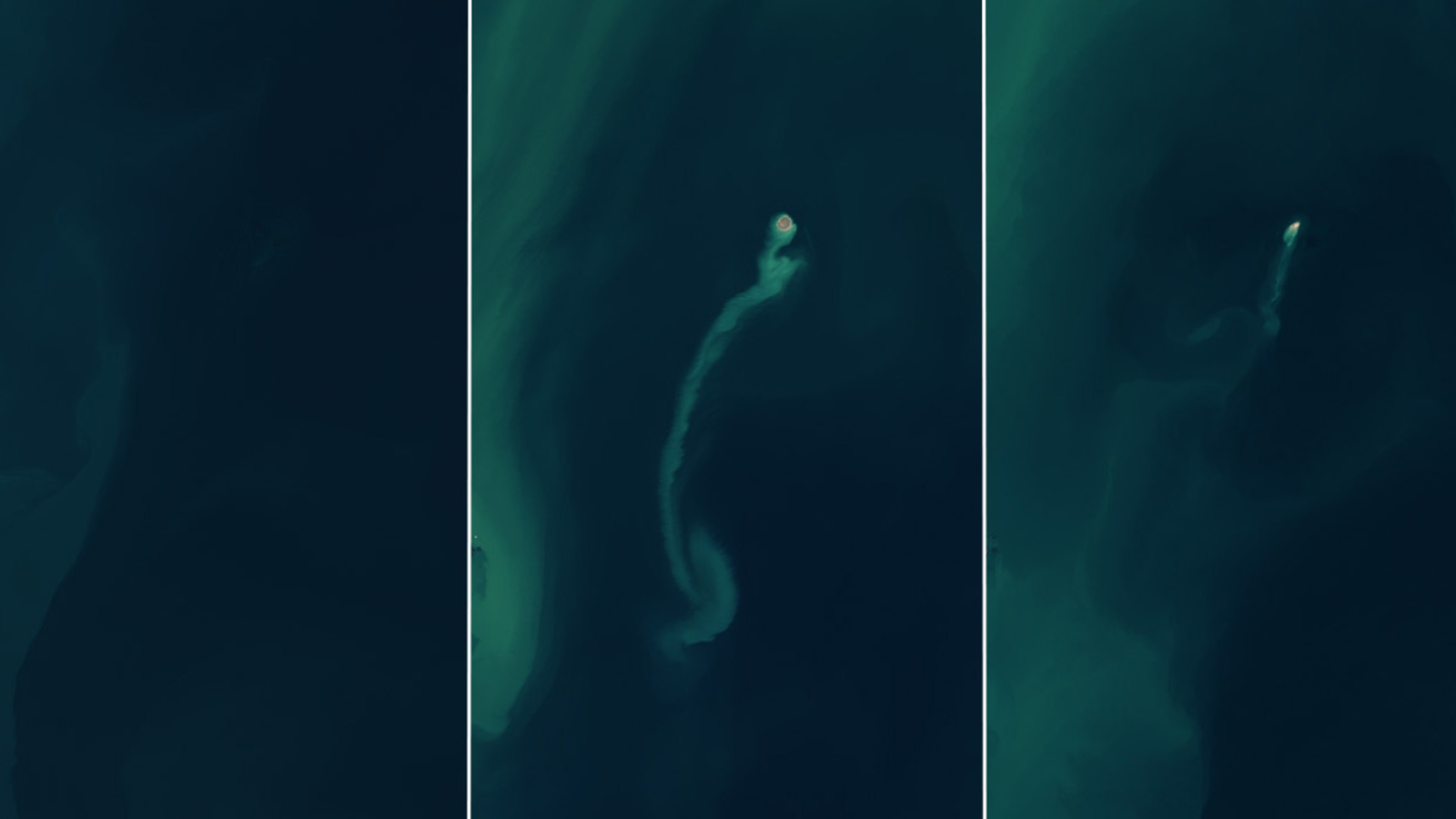QUICK FACTS
Where is it? Kumani Bank, Caspian Sea [39.5666672, 49.5898615]
What’s in the photos? The emergence and rapid disappearance of a volcanic “ghost island”
Which satellites took the photos? Landsat 8 and Landsat 9
When were the photos taken? Nov. 18, 2022; Feb. 14, 2023; and Dec. 25, 2024
A striking series of satellite photos shows the brief lifespan of a “ghost island” that emerged and quickly disappeared in the Caspian Sea after an underwater mud volcano blew its top.
The fleeting landmass emerged at the end of January 2023 above Kumani Bank, an underwater volcano about 15 miles (24 kilometers) off the east coast of Azerbaijan. By the time it was fully formed, on Feb. 4, the island measured around 1,300 feet (400 meters) across, according to NASA’s Earth Observatory.
However, the island was unstable, and by the time the last photo was taken in December 2024, it had “nearly eroded away, retreating from view like an apparition,” Earth Observatory representatives wrote. By now, the island has likely vanished.
Kumani Bank has erupted eight times since it was first discovered in 1861. Each outburst lasted just a few days, yet all of these events resulted in at least some form of temporary island. The strongest recorded eruption, which occurred in 1950, resulted in a 2,300-foot-wide (700 m) landmass that stood 20 feet (6 m) above sea level.
Related: See all the best images of Earth from space
Kumani Bank is a mud volcano, meaning it spews a superheated slurry of mud and water instead of lava and ash.
Azerbaijan has one of the highest concentrations of mud volcanoes anywhere on Earth, with more than 300 muddy vents on the mainland or offshore. This is due to the country’s position above a “convergence zone” where the Arabian and Eurasian tectonic plates collide, leading to increased geothermal activity.
Mud volcanoes are not as violent or destructive as other volcanoes. However, they do contain high levels of pressurized natural gas. This gas can be ignited by sparks from colliding rocks, leading to sporadic fiery outbursts.
An underwater mud volcano near Kumani Bank is believed to have triggered a towering inferno, several hundred feet tall, that exploded above the Caspian Sea in 2021.
Other volcanic “ghosts”
Normal, non-mud volcanoes can also create temporary islands when they erupt beneath the waves.
In 2015, a 0.7-square-mile (1.9 square kilometers) island emerged in the southern Pacific Ocean above the Hunga Tonga-Hunga Ha’apai volcano in Tonga. However, it was wiped out by the same volcano in January 2022, when the underwater mountain unleashed one of the most powerful volcanic eruptions ever recorded.
Researchers later revealed that the colossal explosion likely killed never-before-seen microbe species that evolved on the isolated landmass.
In October 2023, a violent eruption off the coast of Japan’s Iwo Jima island also created a temporary landmass, dubbed Niijima, or “New Island.” It grew to be around 330 feet (100 m) wide and 66 feet (20 m) tall, and was clearly visible from space.
But in March 2024, drone footage revealed that the island had started to quickly sink into the sea, despite continued signs of volcanic activity, according to Newsweek.
